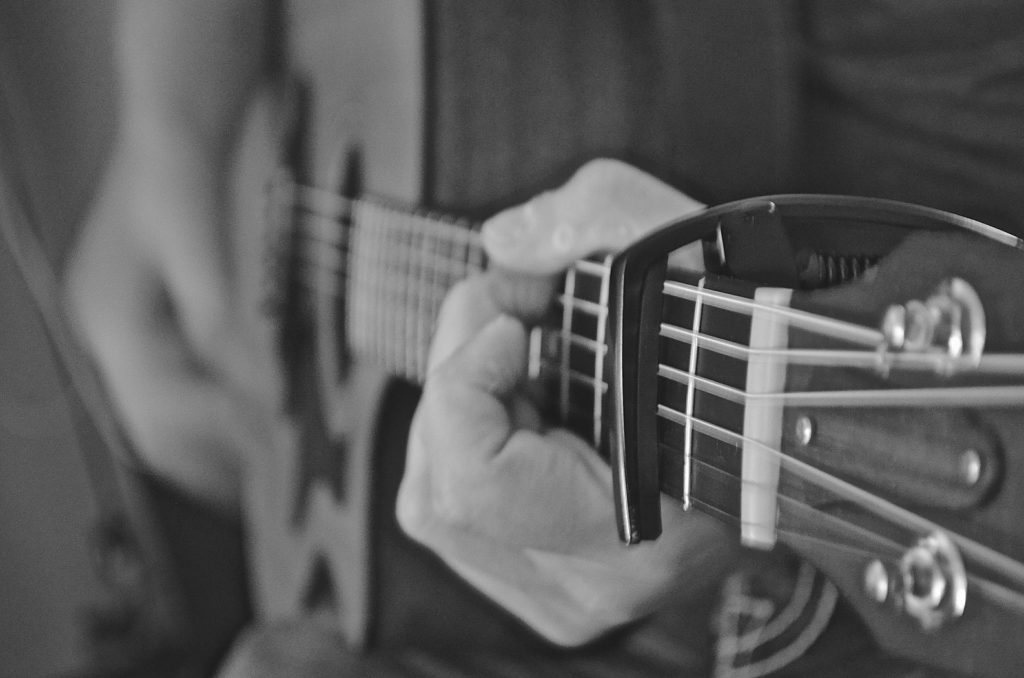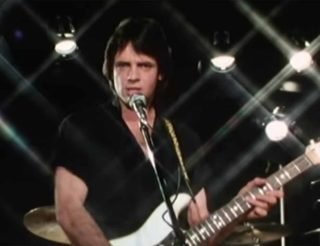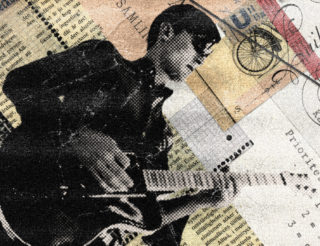7th Chords: What are they and How to play them on the Guitar
Author: Brett Heenan

As a beginner guitarist you’ll come across 7th chords quite often, but sometimes it’s hard to understand what they’re used for and how they’re actually formed. In this article, we’ll dissect the make up of a 7th chord and some simple shapes that can be played all over the fretboard.
Table of Contents
Triads
Triads are chords built from 3 notes, hence the prefix tri, meaning 3!
7th chords are really just an extension of a triad. If you don’t know already, a triad is the basis for most of the harmony we’re familiar with, whether it be western classical music, rock, pop or jazz. Triads are chords built from 3 notes, hence the prefix tri, meaning 3.
When you play an open C chord at the 3rd fret you’re playing a triad. There’s five notes ringing out, but that’s because some of the notes are doubled. At the core you’re really only playing the notes C-E-G. And, when you play a bar chord version of C major the notes are arranged a little differently, but still the only notes being played are C-E-G.
Triads are built in intervals of thirds and generally built from the 1st, 3rd and 5th degree of a given scale. Hence, in a C major scale, the 1st, 3rd, and 5th degrees are the notes C-E-G.
7th chords are formed by adding another note to a triad. You might have guessed that that note is the 7th degree of a given scale.
Building 7th chords
Given the C major scale, which contains the notes C-D-E-F-G-A-B, we can build a C major 7th chord (often denoted CM7) by playing the notes C-E-G-B.
As shared in the previous two chord diagrams, we’d only have to change one note in each of those shapes to create a Major 7th Chord.
C-dominant 7 (or C7 as it’s commonly seen), is built by taking a C major triad and adding a flat 7.
So C-E-G-B becomes C-E-G-Bb(flat).
We can also add a 7th to minor triads. Depending on the context, this can be either a natural 7 or flat 7.
With a C minor triad, which is composed of the notes C-Eb(flat)-G, we’d add a flat 7th to get a Cminor 7 (commonly written as Cmin7) chord which would be spelled C-Eb-G-Bb. In the context of the two shapes we’ve been working with, it’d look like this:
You’ll notice in the first diagram that the 5th (G) is omitted. This is because when we begin extending chords, the fifth degree is often the first note to be omitted because it has the least effect on the overall harmony of the chord. When you start playing chords with 9ths and 13ths (more about these in an upcoming post) you’ll often see the fifth omitted.
As guitar players we only really have 4 fingers so sometimes we have to omit a note to successfully play extended chords and often times the fifth muddles the overall colour and clarity of the chord as well. In this particular example, the 5th is omitted for purposes of easier fingering.
Though less common, you can also play a minor triad with a natural 7. this is usually denoted as a major-minor 7 chord. To play a Cmajor-minor7th we’d spell the notes C-Eb-G-B(natural). Here’s how they would look following the examples we have been using:
Lastly, you can play a minor 7th chord with a flatted 5th degree. This is referred to as a half diminished chord or minor 7 flat 5. In the context of a Cminor chord this would be spelled C-Eb-Gb-Bb. Because of issues of fingering, only the second version of the diagram has been included here:
Simple Shapes for Playing 7th chords
A nice exercise for working on some of these chords is to play a scale up the neck harmonised in 7th chords. You can take all of the previous shapes we’ve gone over and apply them to the C major scale.
Hopefully you’ll come away from this article with a better understanding of how 7th chords are formed. Inspect the chords you already know and figure out what note you can change to make it a 7th chord. Often times the root (first degree) of the chord is doubled so all you have to do is bring it down a whole step or half (depending on the chord) and you’ll be playing a 7th chord.
In my next article, I’ll be exploring ways in which we can extend chords even farther by adding 9ths, 11ths, and 13ths and begin the play some of the sounds often heard in the Jazz idiom.
7th chords are a fascinating world of musical harmony that doesn’t get explored much outside of Jazz, but it will yield great results if you do so! To do learn more about using these chords, we suggest you browse our blog for articles on music theory topics like intervals, scales, and key signatures as it’ll help you understand how 7th chords occur throughout music. A few articles to help you with this include “what is a distance between two notes in music?“, how to play like pete townshend, and things to know before picking up a guitar.








This is the best explanation I’ve run across. I thought I knew this stuff but the way it is worded here made me understand that I really didn’t understand it that well, but I learned a lot.